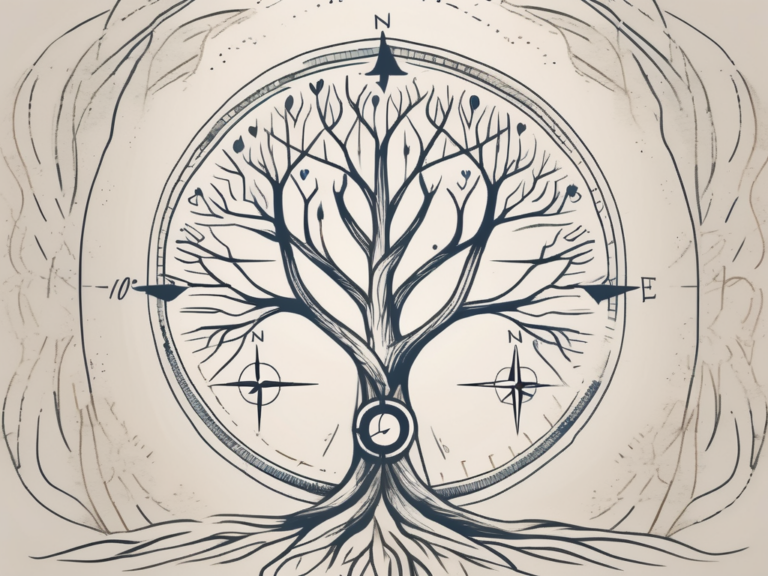The Role of Cranial Nerves in the Human Body
Cranial nerves play a crucial role in regulating various functions of the human body. These twelve pairs of nerves, which originate from the base of the brain, are responsible for a wide range of sensory and motor functions. Understanding the intricate workings of these nerves can provide valuable insights into the complexities of the human nervous system.
Understanding Cranial Nerves
The term “cranial nerves” refers to the nerves that emerge directly from the brain, as opposed to those that originate from the spinal cord. This distinction highlights the significance of these nerves for our overall well-being. Without the proper functioning of cranial nerves, our daily lives would be vastly different.
Delving deeper into the world of cranial nerves reveals a complex network that plays a crucial role in our physiological processes. These nerves are categorized based on their functions, with some primarily responsible for sensory information, while others govern motor functions. Each cranial nerve has a specific role to play, contributing to the seamless operation of our bodily functions.
Definition and Basic Function of Cranial Nerves
So, what exactly are cranial nerves? Simply put, they are a part of the peripheral nervous system and carry vital information between the brain and various regions of the head and neck. These nerves control a wide array of functions, including vision, taste, hearing, facial movements, and even the regulation of vital organs.
Furthermore, the intricate connections of cranial nerves extend beyond basic sensory and motor functions. They are integral to our ability to express emotions through facial expressions, such as smiling or frowning, showcasing the profound impact these nerves have on our daily interactions and communication.
The Importance of Cranial Nerves in the Nervous System
The intricate web of cranial nerves is one of the key components of our highly sophisticated nervous system. They facilitate the exchange of sensory information, allowing us to perceive and interact with the world around us. Additionally, they enable the brain to send commands to different parts of the body, coordinating our movements and ensuring optimal functioning.
Moreover, cranial nerves are essential for maintaining homeostasis within the body, regulating crucial functions like heart rate, blood pressure, and digestion. This intricate balance orchestrated by the cranial nerves showcases their vital role in sustaining life-sustaining processes and overall well-being.
The Twelve Cranial Nerves and Their Roles
Now, let’s delve into the specific functions of each cranial nerve. Understanding their individual roles can shed light on the complexities of our neural network and how it contributes to our overall well-being.
Overview of the Twelve Cranial Nerves
The twelve cranial nerves can be divided into three categories based on their functions: sensory, motor, and mixed nerves. Sensory nerves carry signals related to sensory information such as vision and hearing, while motor nerves control the movement of muscles. Mixed nerves, as the name suggests, possess both sensory and motor functions.
Each cranial nerve is unique in its function and plays a crucial role in maintaining the intricate balance of our nervous system. For example, the olfactory nerve is responsible for our sense of smell, allowing us to enjoy the aroma of freshly baked bread or the fragrance of blooming flowers. In contrast, the trigeminal nerve is essential for facial sensation and motor functions, enabling us to feel touch on our face and chew our food effectively.
Specific Functions of Each Cranial Nerve
Let’s take a closer look at a few examples to understand the diverse functions of these nerves. The optic nerve, for instance, is crucial for vision, transmitting signals from the eyes to the brain. On the other hand, the facial nerve plays a vital role in controlling facial expressions and sensation in the face.
One particular cranial nerve that has been gaining attention recently is the vagus nerve. This remarkable nerve has a far-reaching impact on our overall well-being, including our digestive system and even our emotional state. It is often referred to as the “wandering nerve” due to its extensive distribution throughout the body.
Another fascinating cranial nerve is the vestibulocochlear nerve, which is responsible for our sense of balance and hearing. This nerve allows us to maintain our equilibrium, whether we are standing still or moving, and enables us to appreciate the beautiful melodies of music or the sound of crashing waves.
Disorders Related to Cranial Nerves
Within the intricate network of cranial nerves, a myriad of disorders can manifest, disrupting the delicate balance of neurological functions and giving rise to a range of health issues. These disorders can impact crucial functions such as sensation, movement, and even facial expressions, underscoring the importance of understanding their nuances for early detection and targeted treatment.
Exploring the realm of cranial nerve disorders unveils a tapestry of complexities that challenge both patients and healthcare providers. From the debilitating pain of trigeminal neuralgia to the sudden onset of Bell’s palsy, these conditions can significantly diminish a person’s quality of life if left unchecked. Heightened awareness of the signs and symptoms associated with these disorders is paramount in empowering individuals to advocate for their health and well-being.
Common Disorders and Their Symptoms
Trigeminal neuralgia, often described as an excruciating facial pain that feels like an electric shock, serves as a poignant example of the disruptive nature of cranial nerve disorders. Conversely, Bell’s palsy, characterized by the abrupt weakness or paralysis of facial muscles, presents its own set of challenges, impacting expressions and daily functions we often take for granted. Recognizing these distinctive symptoms is the first step towards proactive management and effective treatment.
Delving deeper into the realm of cranial nerve disorders reveals a spectrum of manifestations that can vary in intensity and duration. While some individuals may experience fleeting episodes of discomfort, others grapple with persistent challenges that necessitate ongoing care and support. By shedding light on these conditions, we aim to foster a greater understanding of the complexities inherent in neurological health and the resilience displayed by those navigating these obstacles.
Diagnosis and Treatment of Cranial Nerve Disorders
Unraveling the mysteries of cranial nerve disorders requires a multidimensional approach that encompasses thorough diagnostic evaluations and tailored treatment strategies. From advanced imaging techniques that illuminate the inner workings of these intricate pathways to specialized assessments that gauge nerve function with precision, healthcare professionals leverage a diverse toolkit to unravel the complexities of these conditions. The journey towards diagnosis is often a collaborative effort, with patients and providers working in tandem to decipher the intricacies of each unique case.
Guided by a commitment to holistic care, treatment modalities for cranial nerve disorders span a wide spectrum, reflecting the individualized nature of each condition. While pharmacological interventions aim to alleviate symptoms and improve quality of life, physical therapy plays a pivotal role in restoring function and promoting long-term recovery. In select cases where conservative measures fall short, surgical interventions may offer a path towards resolution, underscoring the importance of a comprehensive care plan tailored to each patient’s needs.
The Impact of Cranial Nerves on Daily Life
We often take the functioning of cranial nerves for granted, but their impact on our daily lives is profound. From the simplest tasks like tasting our favorite foods to the complex coordination required for activities like walking and speaking, cranial nerves are involved in numerous essential functions.
Understanding the intricate network of cranial nerves reveals the remarkable complexity of the human body’s nervous system. These twelve pairs of nerves emerge directly from the brain and brainstem, each with specific functions that contribute to our sensory and motor capabilities. The cranial nerves play a vital role in connecting the brain to various parts of the head, neck, and trunk, allowing for seamless communication and control.
How Cranial Nerves Affect Sensory and Motor Functions
Our sensory experiences, such as perceiving the taste of our favorite dish or marveling at the beauty of a scenic view, are made possible by cranial nerves that transmit these signals to the brain. Meanwhile, motor functions, like maintaining balance or articulating words, depend on the precise coordination of cranial nerves with other parts of the nervous system.
Moreover, the cranial nerves are not limited to basic sensory and motor functions; they also play a role in regulating autonomic processes such as heart rate, digestion, and respiratory rhythm. This intricate involvement underscores the indispensable nature of cranial nerves in maintaining homeostasis and overall well-being.
The Role of Cranial Nerves in Maintaining Balance and Coordination
Balance and coordination are crucial for carrying out daily activities smoothly. Cranial nerves, working in conjunction with other components of the nervous system, help us maintain our equilibrium and ensure precise motor control. Any disruption in this delicate balance can have a significant impact on our daily lives.
Furthermore, cranial nerves are essential for facial expressions, enabling us to convey emotions and communicate non-verbally. The intricate interplay between cranial nerves and facial muscles allows for a wide range of expressions, from smiles of joy to furrowed brows of concern, enriching our interactions and relationships.
Future Research on Cranial Nerves
The study of cranial nerves is an ongoing endeavor, and advancements in this field have the potential to unlock new frontiers in neuroscience and medical interventions.
Current Challenges in Cranial Nerve Research
Although significant progress has been made, there are still challenges to overcome in our understanding of cranial nerves. Researchers continue to explore the intricate details of their functioning and unravel the complexities of their interconnections. This requires collaboration among experts from various disciplines.
One of the current challenges in cranial nerve research is the need to further understand the role of these nerves in various neurological disorders. Conditions such as trigeminal neuralgia, Bell’s palsy, and vestibular disorders highlight the importance of delving deeper into the specific functions and dysfunctions of cranial nerves.
Potential Breakthroughs and Developments in the Field
Exciting breakthroughs are anticipated in the coming years as researchers deepen their knowledge of cranial nerves. These advancements could pave the way for innovative diagnostic techniques, novel treatments, and enhanced rehabilitation strategies.
Furthermore, the exploration of cranial nerve regeneration holds promise for the development of groundbreaking therapies. Understanding how to repair and regenerate damaged cranial nerves could revolutionize the treatment of traumatic injuries and degenerative conditions affecting these crucial neural pathways.
In conclusion, cranial nerves are essential players in the symphony of our nervous system, orchestrating the precise coordination between our brain and the rest of our body. Their intricate functions impact every aspect of our daily lives, from our sensory experiences to our motor abilities. Ongoing research and advancements hold the promise of further unraveling the mysteries of cranial nerves, leading to a deeper understanding of human physiology and potential medical interventions.






